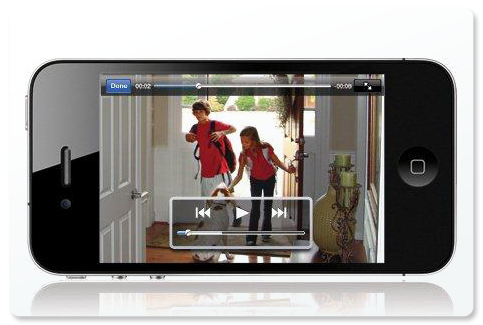Addressing school security challenges with access control systems
Addressing school security challenges with access control systems
 In this article, Matt Thomas Managing Director of ASSA ABLOY Access Control discusses the safety and security of schools and universities in the UK. There are many factors, such as the rise in tuition fees and the development of free schools, that have an impact on the security of students, staff and the public. The failure to protect and secure people and physical assets has serious and severe legal consequences. Arising costs have called for cuts in expenditures over the next 3-5 years; it has become a challenge to implement proper security measures with available resources. Rapid advances in technology, especially internet or smart phone enabled devices, means there is a plethora of potential solutions for each security challenge. This discussion aims to shed some light on the ways to overcome the challenges and constraints surrounding security solutions, while protecting and safeguarding the lives of young students.
In this article, Matt Thomas Managing Director of ASSA ABLOY Access Control discusses the safety and security of schools and universities in the UK. There are many factors, such as the rise in tuition fees and the development of free schools, that have an impact on the security of students, staff and the public. The failure to protect and secure people and physical assets has serious and severe legal consequences. Arising costs have called for cuts in expenditures over the next 3-5 years; it has become a challenge to implement proper security measures with available resources. Rapid advances in technology, especially internet or smart phone enabled devices, means there is a plethora of potential solutions for each security challenge. This discussion aims to shed some light on the ways to overcome the challenges and constraints surrounding security solutions, while protecting and safeguarding the lives of young students.Access Control in Educational Premises
At its most basic level, access control is a system for enabling or preventing people from entering or exiting a location, whether a whole site or a single room or cupboard. The majority of access control systems rely on the person or asset transiting in or out of a location being recognised and validated, usually by a “credential”. This credential may be something the person has (key, card, identification tag), something they know (password, PIN) or something intrinsic to them (biometric data such as iris recognition or fingerprints). In many systems, however, more than one layer of credential may be required. This could potentially create a number of complexities regarding integration, system storage and accessing data.
Access control for educational campuses should take into account the following factors:
• Safety of students, staff and authorised visitors
• Legal compliance and statutory duties placed on governors, school heads, local authorities and other bodies
• Protection of valuable assets
• Security and protection of data gathered by the school/ college and held on IT systems
• Managing and controlling security across different venues, sometimes at university level, spread across a city base
The challenges presented by educational premises/ campuses
Educational premises present a number of access control challenges, which may include:
• The need to consider all user groups, including youngsters and those with disabilities, which makes it imperative to use uncomplicated security systems which mitigates against using complicated systems
• The ‘open’ nature of many educational premises, with either full public access or permitted group access.
For many educational campuses, the core issues lie in three main areas: responsibility; understanding; and finance. |
At University level, the access requirements are extended to incorporate various facilities, including the student union, library and accommodation.
The geography of many educational campuses, often with public access running through the site (roads, rights of way, public footpaths), poses difficulty in establishing effective ‘perimeter security’ such as fencing/barriers.
• The age of many school and college buildings, which can make repairs and modifications expensive and can make cabled systems problematic
• The skills and availability of non-teaching support staff with the time and ability to implement and maintain an effective access control system.
• Avoiding complexity (e.g. avoiding the accretion of systems so that a user needs one credential for access, another credential to use equipment such as photocopiers/printers, and a third for access to cafeteria or library facilities)
Core issues in implementing effective access control
For many educational campuses, the core issues lie in three main areas: responsibility; understanding; and finance.
Responsibility:
One of the key issues is to establish the ‘responsibility chain” for security matters. This particularly applies to schools that move from Local Authority supervision to having more autonomy under other models such as Academies and the new Free schools. In most schools, the legal responsibility will lie with the Governing body and the Head Teacher.
The geography of many educational campuses, often with public access running through the site (roads, rights of way, public footpaths), poses difficulty in establishing effective ‘perimeter security’ such as fencing/barriers.
• The age of many school and college buildings, which can make repairs and modifications expensive and can make cabled systems problematic
• The skills and availability of non-teaching support staff with the time and ability to implement and maintain an effective access control system.
• Avoiding complexity (e.g. avoiding the accretion of systems so that a user needs one credential for access, another credential to use equipment such as photocopiers/printers, and a third for access to cafeteria or library facilities)
Core issues in implementing effective access control
For many educational campuses, the core issues lie in three main areas: responsibility; understanding; and finance.
Responsibility:
One of the key issues is to establish the ‘responsibility chain” for security matters. This particularly applies to schools that move from Local Authority supervision to having more autonomy under other models such as Academies and the new Free schools. In most schools, the legal responsibility will lie with the Governing body and the Head Teacher.
 |
| Access control solutions include risk assessment of threats and the barriers to prevent such risks from occurring |
Some aspects may be outsourced, such as manned guarding, managing CCTV to private contractors and or involve local community police initiatives.
Unless the responsibility chain is mapped, recorded and communicated, any access control system will be unsuccessful. Sustaining security as an area of attention is challenging but essential.
Understanding:
Many educational premise managers lack a clear, independent and up to date source of guidance in regards to access control. For example, past government information guidelines fail to take into account the recent changes in technology and society.
Finance:
There is no question that financial constraints are now a major factor in decisions in all public sector organisations. For ‘green field’ sites, installing a purpose designed full access control system is still feasible. However, if the organisation is looking to overhaul, renew or extend an existing system, the investment is competing with many other priorities.
Student Experience:
Unless the responsibility chain is mapped, recorded and communicated, any access control system will be unsuccessful. Sustaining security as an area of attention is challenging but essential.
Understanding:
Many educational premise managers lack a clear, independent and up to date source of guidance in regards to access control. For example, past government information guidelines fail to take into account the recent changes in technology and society.
Finance:
There is no question that financial constraints are now a major factor in decisions in all public sector organisations. For ‘green field’ sites, installing a purpose designed full access control system is still feasible. However, if the organisation is looking to overhaul, renew or extend an existing system, the investment is competing with many other priorities.
Student Experience:
Universities in particular are increasingly concerned about the quality of the student experience. With rising tuition fees and increased competition for places, it is important that students not only feel safe but also can move freely around campus. Properly designed access control systems will enhance the student experience.
Options and Solutions:
Faced with this complex balance of competing priorities, how can educational bodies navigate an effective way forward, ensuring adequate security within the financial and technical parameters of their premises? As discussion points, the following may provide useful indicators:
The severe financial constraints in public finances do not necessarily prevent educational institutions from employing these security technologies, as they can be installed at a low cost |
 • Implement an up to date risk assessment using the free survey services provided by many leading access control providers and by engaging in a serious debate within the governing and management structure about the level of risks.
• Implement an up to date risk assessment using the free survey services provided by many leading access control providers and by engaging in a serious debate within the governing and management structure about the level of risks.• The risk assessment must start with the level, frequency and severity of threat to student security and safety, followed by the safety and security of teaching and other staff, and then other visitors and users of the site.
• Having identified the risks, consider the number of barriers or preventative measures that need to be implemented to provide the commensurate level of security. How long would each barrier take to be breached and how quickly would a security alarm be raised and a response mobilised?
• Assess the level of loss and consequences. Whereas pupil security may be paramount and justify complex access control measures, it may not be justifiable in real terms to apply the same criteria to assets in the IT lab or sports centre.
• Factor in the quality of the student (and teacher) experience by considering the ease with which secure movement can be achieved. How many different credentials are you considering (keys, pin codes, fobs, cards etc.)?
• Differentiate between the functionalities you need in different areas and significant cost savings can be achieved. Be sure you are extending the existing access control system rather than introducing a new one.
• Differentiate between the functionalities you need in different areas and significant cost savings can be achieved. Be sure you are extending the existing access control system rather than introducing a new one.
Conclusion

Access control in educational buildings and campuses, from primary schools to Universities, is a complex and challenging issue. However, by using the right technologies, the complexity can be reduced which will increase levels of security and improve the experience of student and staff. The severe financial constraints in public finances do not necessarily prevent educational institutions from employing these security technologies, as they can be installed at a low cost as well as reducing running costs.









Comments
Post a Comment